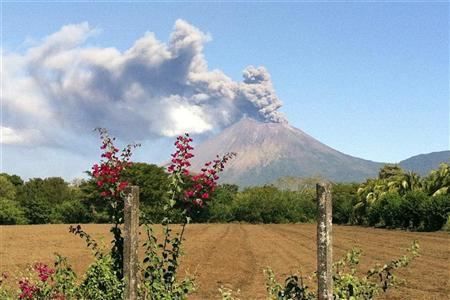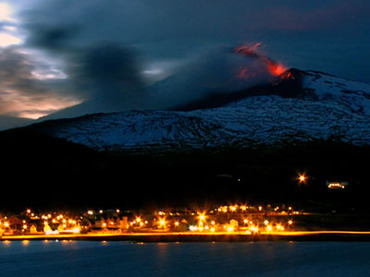
© REUTERS/StringerThe San Cristobal volcano spews up large clouds of gas and ash near Chinandegga City, some 150 km (93 miles) north of the capital Managua December 26, 2012.
Nicaragua's tallest volcano has belched an ash cloud hundreds of meters (feet) into the sky in the latest bout of sporadic activity, prompting the evacuation of nearby residents, the government said on Wednesday.
The 5,725-foot (1,745-meter) San Cristobal volcano, which sits around 85 miles north of the capital Managua in the country's northwest, has been active in recent years, and went through a similar episode in September.
The latest activity began late on Tuesday.
Government spokeswoman Rosario Murillo called on residents who live within a 1.9-mile (3-km) radius of the volcano to leave the area. Around 300 families live near the volcano.
"We have some families who have self-evacuated. ... We ask (the people) to go to a safe place, it's just for a few days during this emergency," she said, adding it was a precautionary measure.
A billowing grayish cloud could be seen drifting sideways from the volcano's peak.
The volcano also stirred in mid-2008, when it expelled gas and rumbled with a series of small eruptions.
Source: Reuters



Comment: Something Wicked This Way Comes